The Latin meaning of that, according to Google Translate, is “Wine of the Spirit”. As a philistine in the ways of Latin, I’ll have to accept it. No clue. Truly. Still, I’m willing to forge ahead, bracing myself for the potentiality of a more studied reader to come at me with a more robust or meaningful interpretation. It’s ok. I like learning new things. About old things. I confess, through my efforts for this website and The Archive generally, I have developed a settled tendency to reflect on things from the past. Humorist John Hodgeman called nostalgia “…the most toxic impulse.” Well, call me Captain Toxic Impulse, because here we go!
A recent, large donation of books to The Archive that both deserves and will get its own story in the near term included a custom hardbound collection of several editions of the post-war fencing magazine that was an immediate predecessor of American Fencing Magazine, called The Fencer. For its first few issues, The California Fencer. It was the brainchild of two Bay Area fencers, Arthur Lane and Pierre (Peter) Paret. Arthur remained in the area throughout his life and was a coach at UC Berkeley, founded his own Berkeley-based club that lasted for many years, and, late in life, taught at Harold Hayes’ Pacific Fencing Club on the island of Alameda, which sits about 30 yards off the shores of Oakland. Peter Paret, sometime after he put writing and distributing fencing magazines in his rear view, was a noted and respected Cultural Historian. Educated at Cal and Oxford, he taught at UC Davis, then Stanford, as a Professor of History. The Fencer magazine ran a short course, publishing from 1946 until 1948. I have a xerox copy of the entire run, thank you Harold Hayes, and now have a number of originals, their hardbound binding defeating my desire to scan them not withstanding. I find reading the originals more fulfilling than perusing the xerox – and now, pdf – version, due to, of all things, the textural quality of the paper they were printed on. It feels more readable. Does that make sense to anyone else? Anyone? Bueller?
Picking up the bound volume recently and thumbing through Issue #4, June, 1946, I came across a one page piece, written purely for humor, that I thoroughly enjoyed. However, part of my enjoyment I believe stemmed from my ability to recognize almost all the people that are mentioned, mostly by only their first or last name, in what is the imagined exchange between two drunken sots at a San Francisco bar. One of the sots is, not surprisingly, a fencer. What with the rising consumption of alcohol during Covid (yes, that’s a real thing – be careful y’all) I was a little better fortified to understand this meandering account of the state of the Bay Area fencing scene, circa June, 1946. Well, I was after a few cocktails.
In preparation for reading the below, I thought I’d run down the list of all those who get a mention. Here, mostly in order of appearance, are the players: Jack and Kitty Adams, Karl and Emilie Romaine, Erich Funke d’Egnuff, Edward Visconti and Missus Visconti, Hans Halberstadt, Helene Mayer, Salvatore and Kay Giambra, Carlos Bertram, Elizabeth Ferrari*, Ferard Leicester, Jerry Biagini, Peter Paret, Hal Mottershaw**, Dr. William “Bill” O’Brien, Arthur Lane, and Louis Lataillade.
* Elizabeth Ferrari was Hans Halberstadt’s girlfriend. I’m not 100% certain this is the “Elizabeth” mentioned – heck, I’m not even 50% sure – but she is my favorite candidate.
** I can’t find a photograph of fencer and Army corpsman Harold “Hal” Mottershaw. He fenced at the Funke Fencing Academy for a few years after WW2.
Ok, let’s do this! I’m saving the photos of all the players for after the story, in the order they make their appearance in the story. It’s hard enough to interpret the drunken ravings of the mystery writer/fensher. The exception to the order of the photos is up at the top of the page, and that is a picture of Jerry Biagini, left, lunging and scoring against Los Angeles-based Ralph Faulkner student Arthur Kaye, taken at the 1948 Pacific Coast Championships at the Los Angeles Athletic Club. Kaye was the eventual winner of the PCC Open Foil that year. I’ve used some of the photos herein for other stories in the past, but no matter. Just trying to be helpful. So without further delay, here’s the transcription:
_____________________
IN VINO SPIRITUS or THE LAST ROUND
…of Epicure the Swordsman
“Dya know Jack Adams?” asked Epicure, swaying gently agains the bar. “Dya know Jack?
“Never hear of him,” countered the Stranger. “Have another.”
“Good old Jack! Pal o’ mine. Romaines? No? Crosh Blades? No? Funke? No? Visconti? No? Halberstadt? No????? Where hell you been? Nowhere?”
“N’York.”
“Shnothing. You gotta go to Adams an’ Funke, to be shomewhere, an’ my frien’ Visconti. Best Chianti west o’ Alessandria.”
“Where’s that?”
“Don’ know. Marina, maybe, don’ know. An’ Hans an’ Erich, good pals o’ mine, best frien’s in town. Make bombs.”
“Bombs?”
“Yesh, better’n Joe Louis, knock you out before eighth round. At Emilie’s man sez to me, sez, ‘Is this how fenshers train?’ An’ I sez, ‘You tryin’ to inshult me?’ An’ he bit the dust.”
“Did you knock him down?”
“No, was tryin’ to craw under carpet an’ my frien’ Helene, gran’ girl, the besht, shtept on him an’ say, ‘Look aat theee leetle mousie in shtriped pantieees! I have heeem keeled! Yes?’”
“What’s all this you’re talking about?”
“Fenshing. Great sport, parties all the year ‘roun’. I’m fensher. You fensher? No? Will take you nest Open Housh, make new man of you.”
“I don’t want to fence.”
“Who said fenshing? I shaid I’ll take nesht Open Housh. Good ol’ Jack, he was firsht, Chrishmush, never mished drinks. Kitty good gal, frien’ o’ mine, she an’ Jack had Open Housh at Chrishmush, see? Sal began crap game an’ lost to Carlos, frien’ o’ mine, five to nothin’, Sal directing no good that night. We sat on the floor an……”
“At Jack’s?”
“Whacha mean, ‘Jack’s?’ I’m talkin’ ‘bout Romaine’s. Big party. All sat on floor. All drunk, ‘cept me, I sat on wall an’ Elizabeth sez, ‘You come down off that wall!’ An’ I sez, ‘Can’t, I’m plastered, sho there!’ Leicester, Lei… Leichester….. Leshter was there. Everbody sez, ‘Hullo, Leshter. That’ll be fifty cents.’ Frien’ o’ mine.”
“Next day tried to swim ‘cross Bay Bridge, but policeman wouldn’t get out of way. Others crossed blades in Berkly with crumpets and used tea to mark hits. Next year will swin ‘cross Bridge at night. Then policeman won’t see me an’ I’ll see girls in Berkly an’ fence. Danshed a polka with Helene….”
“in Berkeley?”
“Who’s talking about Berkly?” Funke’s, pineapple from Hawaii and Champagne an’ Cointereau an’ danshing an’ fenshing. Was sober as Lord and so was Erich an’ so was I an’ Erich. Fenshing great sport. You know Visconti, Maestro? We’re just like that…. Han’ in glove. Jerry an’ Pete an’ Hal an’ Sal mixed their drinks. Terrible, awful. Not gennulmen, like me an’ you. Next time will take you an’ say, ‘Missus Visconti, this frien’ o’ mine, you give him food like before.’ Wunnerful! An’ then Hans got some tanning fluid an’ some lemons and’ some germicide…”
“When was this?”
“Am I dumb or aren’t ya? I’m speaking Hans’ party, course. Every year, clean the floors, make b’lieve er sober, and’ never regret it ‘til next moring. Bisch’bent double, my frien’ Salvadore Dali there, Bill sober, frien’ o’ mine, but sober, Arthur, lil’ Arthur…….. An’ Sal an’ Kay, an’… Lata……Louis. An’ who wasn’t there? Who wasn’t? You wasn’t. Where was you all your life? You no frien’ o’ mine. You no fensher. Go’way. Good ol’ Jack, he shtarted at Chrishmush….. Goo’ night!”
_____________________
And that’s how they trained for fenshing back in 1946. Is it all that different now? Ok, I suppose it is. For the better? Well, that’s a different question.
Now let’s take a look at the cast of characters represented in this rollicking ramble!
Jack and Kitty Adams, seen here at one of the many costume parties that took place at the Halberstadt School of Fencing. Jack and Kitty seem to take a good bit of the blame for alcohol-fueled Christmas rave ups for the fencers. If you’d like to know more about what they got up to, I recommend you check out the story I wrote about 1940s home recording devices and the Adams’ Christmas antics. Right here.
Karl and Emilie Romaine were a husband and wife photography team based in San Francisco. They focused on portraits, and provided head shots and glamour shots for actors, actresses and dancers in the region for several decades. For many modeling tasks for commercial jobs, they would often hire dancers to add an element of athleticism to the image. They felt that dancers, in particular, were more adept and flexible for finding the right pose for the shot. Emilie was a long-time fencer, starting with Erich Funke d’Egnuff. When Hans arrived in San Francisco, he, Karl and Emilie became very close friends and the Romaine’s shot most of the portraits of Hans from that time forward.
This is an add-on that washed up on the shores of my memory while I was editing the post. I was trying to figure out what the reference to ‘crosh blades’ might be near the start of the skit. At first, I thought it was perhaps the name of a club I’d forgotten about, the Crossed Blades. Then it hit me that somewhere in the depths of one of the six scrapbooks of Hans Halberstadt that reside in my digital collection there might be an answer. Something struck a cord, so I went fishing. In the earliest of the scrapbooks, one of two in their original condition that are in The Archive’s collection and 100% scanned, I found a handbill advertising the Funke Fencing Academy, circa 1943, that features the above in the header. I knew I’d seen something about this. Since I figured it out (after some wildly off-base imaginings) I thought I’d add this into the mix. Now, back to our cast of characters.
Erich Funke d’Egnuff started his San Francisco Salle d’Armes in 1933 after learning the trade of fencing master in New York under the tutelage of Anthony Greco. A WW1 veteran of the German army, he emigrated to the US shortly after the war. His San Francisco club, for many years in the basement of the Theater Arts Colony building on Washington St. (long since gone), was the first fencing home of Hans Halberstadt upon his arrival in the city. Erich hired him as an assistant until Hans opened his own club on Fillmore St.
Hans Halberstadt. Julio Castello, Edward Visconti and Erich Funke d’Egnuff in the Funke Fencing Academy. What Julio was doing in San Francisco, I’ve no idea. Edward Visconti can be thanked for supporting the opening of the Halberstadt School of Fencing in 1942. He had retired from coaching after the Italian sports club he had taught at was shuttered due to concerns of members spreading fascist ideology during the early days of WW2. Visconti’s unused equipment did no one any good languishing in his garage, so he gifted the masks, foils, et al, to Hans as the seed for his own club. Not long after, he opened up a custom glove making business on Fillmore St., just a block or two from Hans’ club. Anybody who was anyone in fencing on the West Coast wore a custom Visconti glove, including Los Angeles-based Maestro Aldo Nadi.
Hans Halberstadt, cigar firmly set in jaw, inside his Fillmore St. salle. This photo was taken during a photo session led by Karl and Emilie Romaine that resulted in dozens of photos of Hans, Helene Mayer, Salvatore Giambra, Emilie Romaine and others. It’s the rare photo of Hans that shows him without either a cigar, a pipe or a cigarette. Anywhere, anytime.
Helene Mayer on the left with one of her Mills College students on the tennis court at the Oakland-based women’s college (at that time). Few of the photos of Helene show her with a big smile like this. Mostly often, she is wearing a closed mouth slight smile (think Mona Lisa), if she’s smiling at all. In the majority of the photos that have her in a fencing pose, either a lunge or standing on guard, she’s got some version of ‘game face’ on. For this one, from a series of images taken at an outdoor tournament on the Mills campus, she seems pretty relaxed.
Daniel De La O, Frank Giambra and Salvatore “Sal” Giambra in the Halberstadt School of Fencing. Daniel and Frank were both excellent fencers, but Sal was one of the local stars amongst the men. He was selected as the Team Captain for the 1948 US Olympic team for London, was a consistently strong finisher at national events and a multi-time winner of the Pacific Coast Championships. He also won the Halberstadt Sabre competition a record five times. If there is a photo of his wife Kay in the Halberstadt scrapbooks, she isn’t identified. She gets a mention in the skit, but alas, no photo.
“Lion tamer” Carlos Bertram and two unidentified ladies at a Halberstadt School of Fencing costume party. There were many such parties. Carlos isn’t one of the characters in this skit that I know much about. He had some local results as a novice in sabre, but I don’t think he stayed in the sport long. Or, he didn’t compete much. But he could impersonate a lion tamer and dance with two lovely ladies at once, and that’s good enough for me. To the best of my knowledge, no photos exist of him with whip or chair, so I can only hope to be pleasantly surprised someday by receipt of such evidence.
Elizabeth Ferrari and Hans Halberstadt peruse a score sheet while Jack Baker, leaning against the wall, and another unidentified fencer look on. 1956 Olympian and two-time National Champion Sewall “Skip” Shurtz referred to Elizabeth Ferrari as “the true love of Hans’ life.” There was a significant age difference between them, but Skip said that neither cared about the opinion of others regarding their relationship. I’ve no idea if the Elizabeth mentioned in the story above is this one. If so, she would have been in her mid-20s in 1946. She worked as a medical editor at the UCSF Medical Research Center. I actually don’t think she and Hans met quite as early as 1946, as I have to assume there would be a great many more photographs of her in the scrapbooks that he diligently kept from his arrival in the US in 1940 until his death in 1966. Really, I just wanted to give her some screen time. Sadly, although 35 years his junior, Elizabeth predeceased Hans, passing away from uterine cancer at the age of 42 in 1964.
Ferard Leicester and Helene Mayer in a photo taken in 1935, right about the time she arrived in Northern California to take a job as an instructor of German and fencing at Mills College. Leicester was a long-time fencer and administrator in the Northern California division (or Bay Division, or Pacific Coast Division, depending on what year we’re talking about) and represented San Francisco’s Olympic Club. The OC was for years a strong sponsor of fencing and had offered instruction in the sport from its earliest beginnings. Sadly, a complete record of the earliest fencing documentation for the club was lost during the 1906 San Francisco earthquake. In the subsequent fire, the original Olympic Club building was burned to the ground. The reference above about “that’ll be fifty cents” regarding Ferard Leicester must have something to do with the floor fee at the Olympic Club. Leicester represented the OC for decades and wrote articles for the OC newsletter. I’m guessing he collected the floor fee for fencers visiting the Olympic Club for a night of fencing. And was good at it.
This exceptionally handsome portrait shows Peter Paret, who fenced in San Francisco for the Funke Fencing Academy as a young man. His family arrived in San Francisco in 1937. He enrolled at UC Berkeley in 1942 and was subsequently drafted, serving in combat intelligence and operations in New Guinea, the Philippines and Korea. After his discharge, he returned to Cal and finished his degree. In between, he hatched the idea of writing and editing The Fencer magazine with his friend Arthur Lane, who, by 1946, had founded the Berkeley Fencers Club located on University Avenue. It’s possible that Peter was the author of the above skit. In the publishing credits for the issue, “Epicure the Swordsman” is listed as a guest contributor. Taken at face value, that lets him off the hook. However, Peter was a clever writer and may be simply trying to deflect blame to a straw man. Although an Army veteran and possibly well familiar with the patois of drunken fencers , he was still a youngster of about 22 years of age. I’m very happy to have the above picture, as it’s the second of only two photos I now have of the fencer Peter Paret in my collection. This one is courtesy of his son and daughter, who I’ve just recently made contact with and they very generously sent this photo along for me to use.
Bill O’Brien, as he was known in his competitive days, before becoming Dr. William O’Brien and a coach in his own right, was a San Francisco native who started fencing as a young man at the Funke Fencing Academy. Apparently he was a sober young man, but passionate about the sport from his earliest beginnings. He shows up almost constantly in the ranks of tournament results throughout the mid-to-late 30’s and 1940s. An administrator for the Letterman Army Hospital located in San Francisco’s Presidio, he received permission in the mid-50’s to start a fencing club at the Letterman Gymnasium, which was located on the base. You can still see the building from the Iunchroom at ILM, the George Lucas-founded visual effects company that now has its headquarters in the Presidio. O’Brien ran the program and coached at Letterman for the rest of his life and, as far as I know, never took a nickel for his efforts. In this photo, he’s on the left, scoring a hit against his unknown opponent. Bill’s left arm covers the face of the officiant, Erich Funke d’Egnuff. Funke was a tireless promoter of the sport, appearing frequently in the local papers and was an instigator of fencing demonstrations for any amenable organization with enough space and few chairs for spectators.
Arthur Lane is on the far left in this photo from 1940, taken not long after Hans Halberstadt took on the role of assisting Erich Funke d’Egnuff at the Funke Fencing Academy. In the back row to Arthur’s left (your right) is Ed Houser and Truman Clark. In front, shaking hands, are two WW1 veterans of the German Army, Erich and Hans. Funke was a Saxon in a Bavarian regiment – possibly an uncomfortable situation – and Halberstadts’ regiment was from his native Hesse, where his home town of Offenbach am Main was located. One of the medals awarded to Hans during WW1 was the Hessen Badge of Honor for Bravery and Valor.
Letsh get thish party shtarted! This photo can also be seen in my story, linked above, about Jack and Kitty Adams and the Christmas Party where they recorded the voices of both Hans and Helene Mayer. If you haven’t seen nor heard that yet, by all means, go look & listen. I’ll still be here when you get back. This party picture has the only photo in my collection of the Olympic Club fencer, Louis Lataillade. He’s on the couch, to the left of Helene Mayer (our left). Lest you wonder about his arm that seems near to embracing Helene’s shoulder, I should tell you that the lady with the big smile sitting to Louis’ right is, I’m fairly certain, his fiancée. We’ve also got Jack Adams on the far right of the couch, Carlos Bertram standing behind Louis, and Hans Halberstadt on the far left of the picture – cigarette in hand.
That’s as much as I can reasonably cover during this brief interlude of distraction for your day. The takeaway, for me, is that this group of people really did seem to all get along quite well. In contrast to their Southern California friends and rivals in the sport, the Nor Cal fencers didn’t seem to have any issue with showing up at this club or that, depending on the day and your own preference or convenience. Compare that to the clubs in the south, where word of your having set foot in a rival club for anything other than a competition would get you a letter from your Maestro informing you that your presence in your home club was no longer welcome. And no refunds. That is specifically spelled out in the paperwork I have from Pasadena’s Cavaliers club run by John McKee, and I’ve seen a photo of a letter sent by Aldo Nadi to one of his fencers informing him that he was no longer welcome and an ungrateful lout for daring to set foot in another club. That’s how things rolled in the Southland. Bay Area? Not so much.
Have another drink, friends. Just be safe.

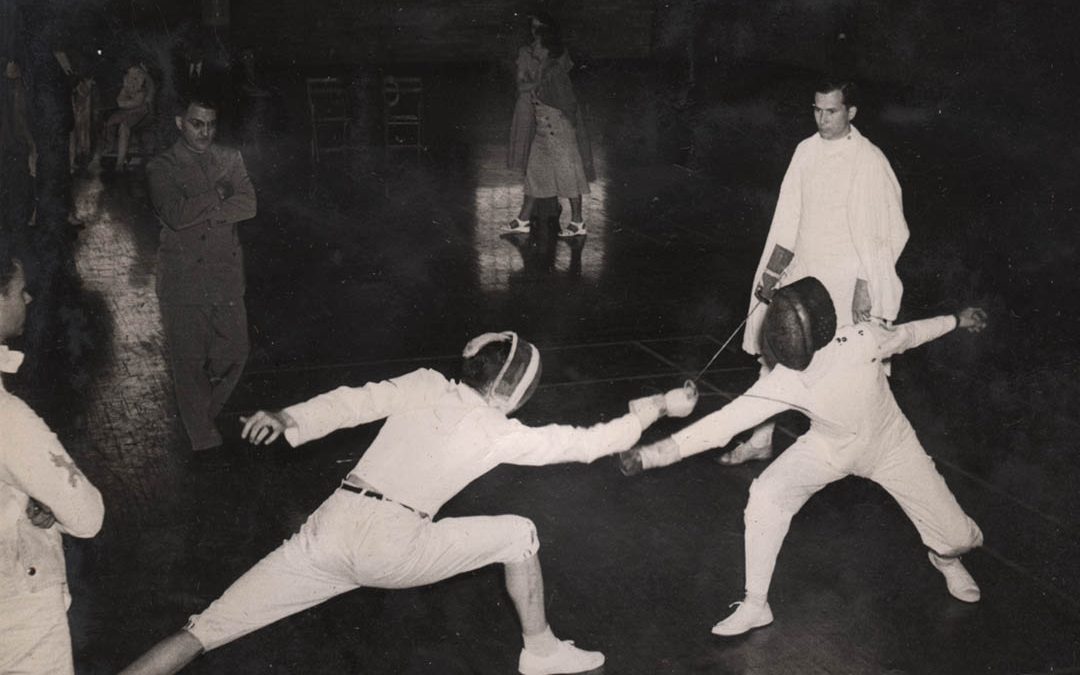
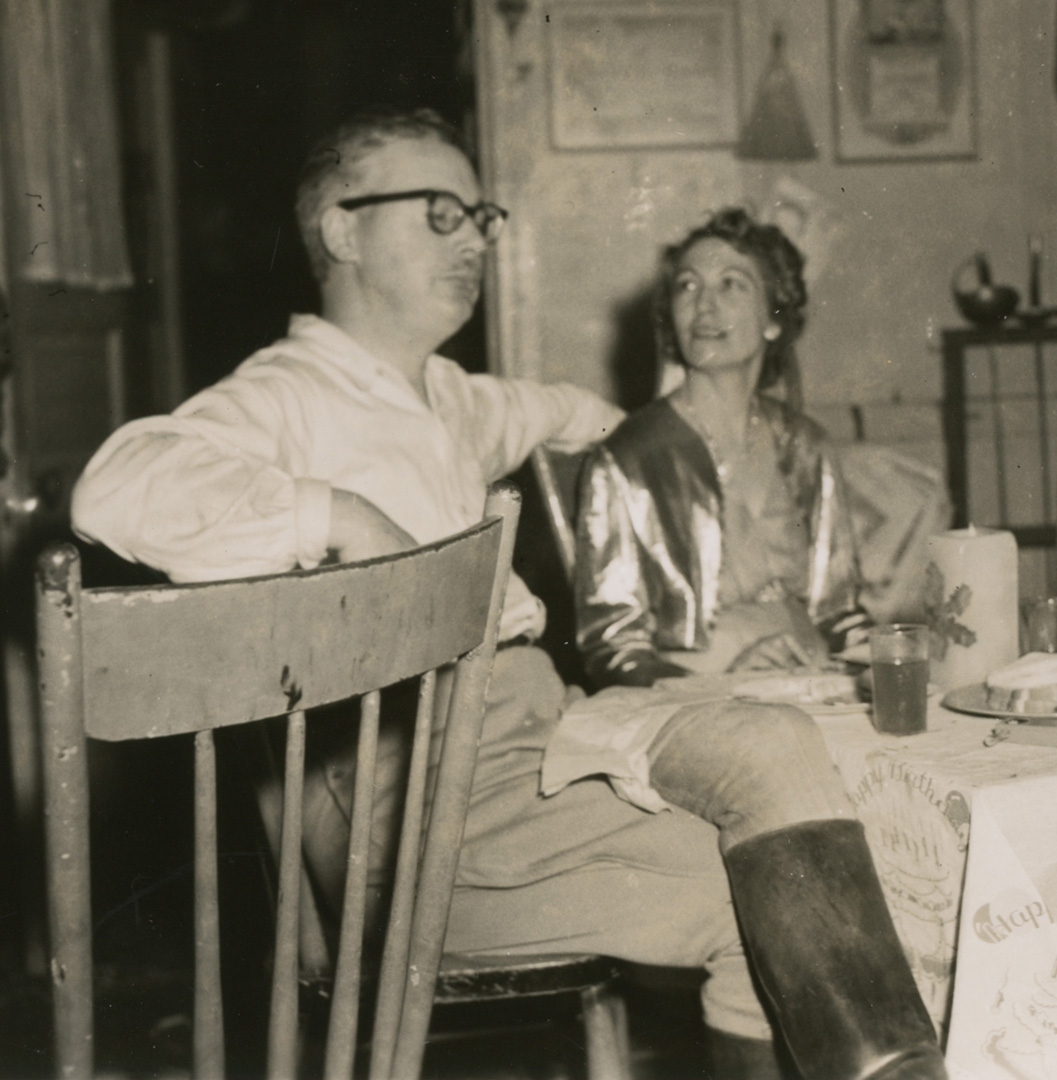

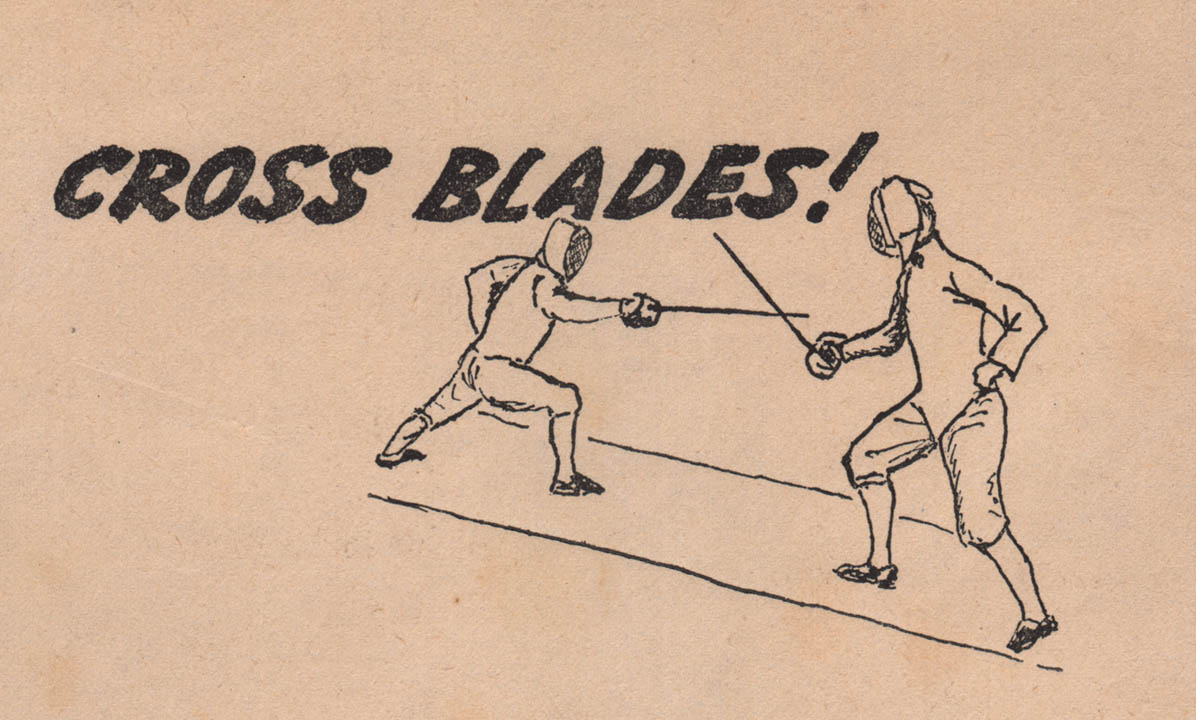
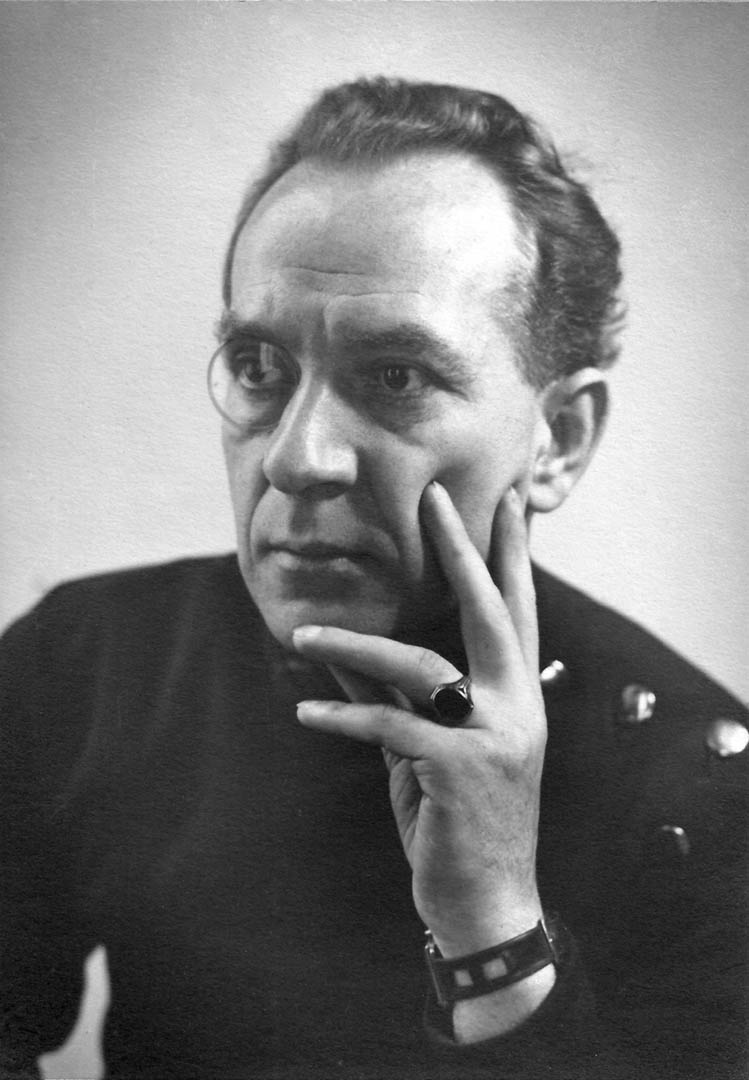
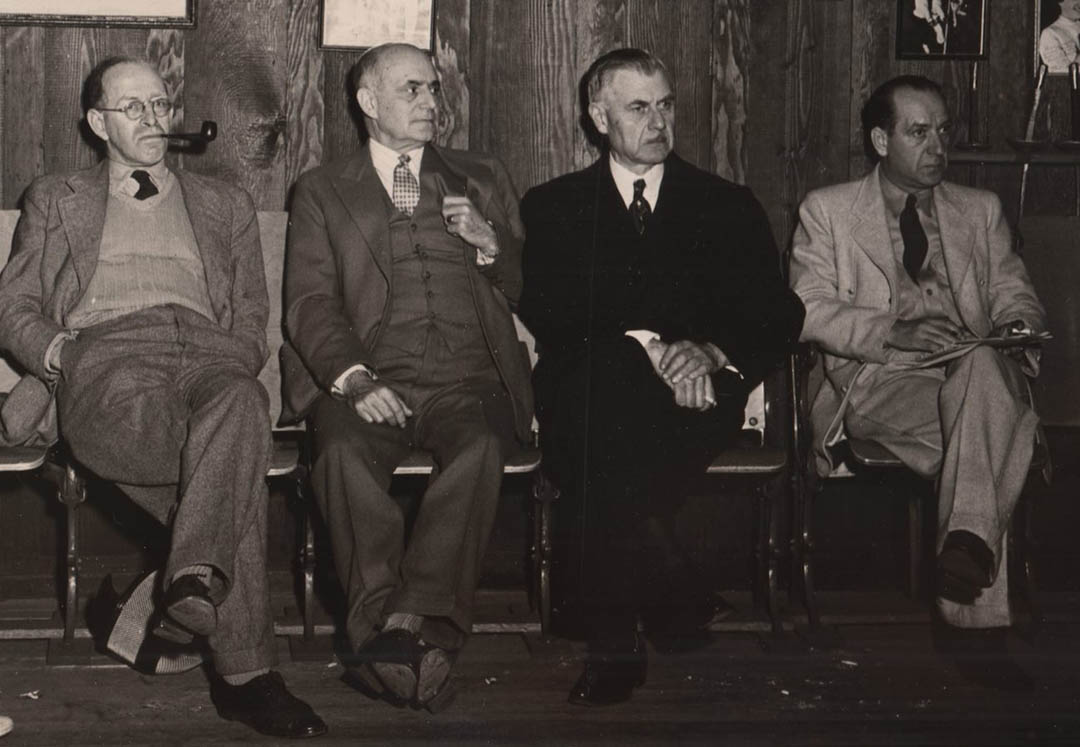
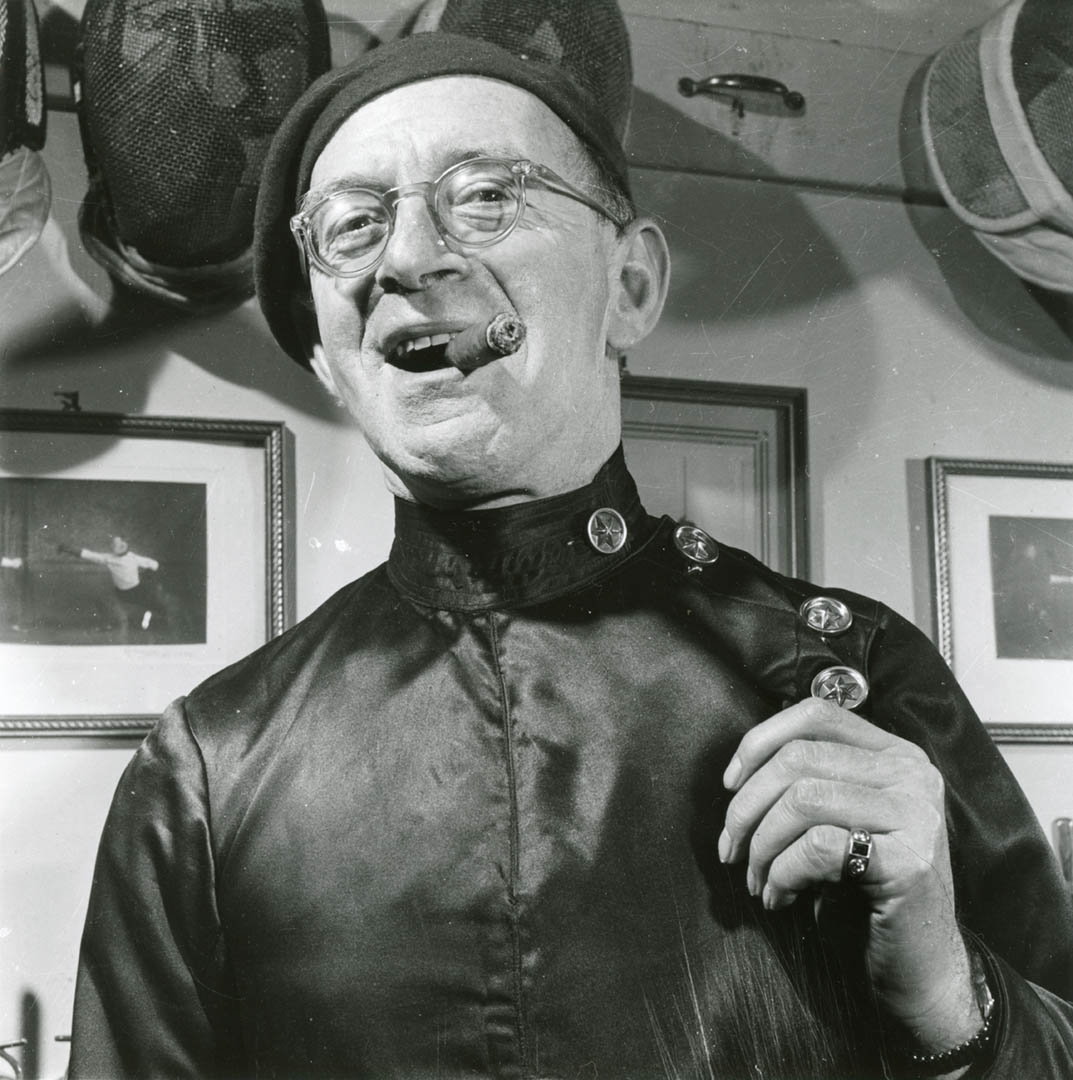
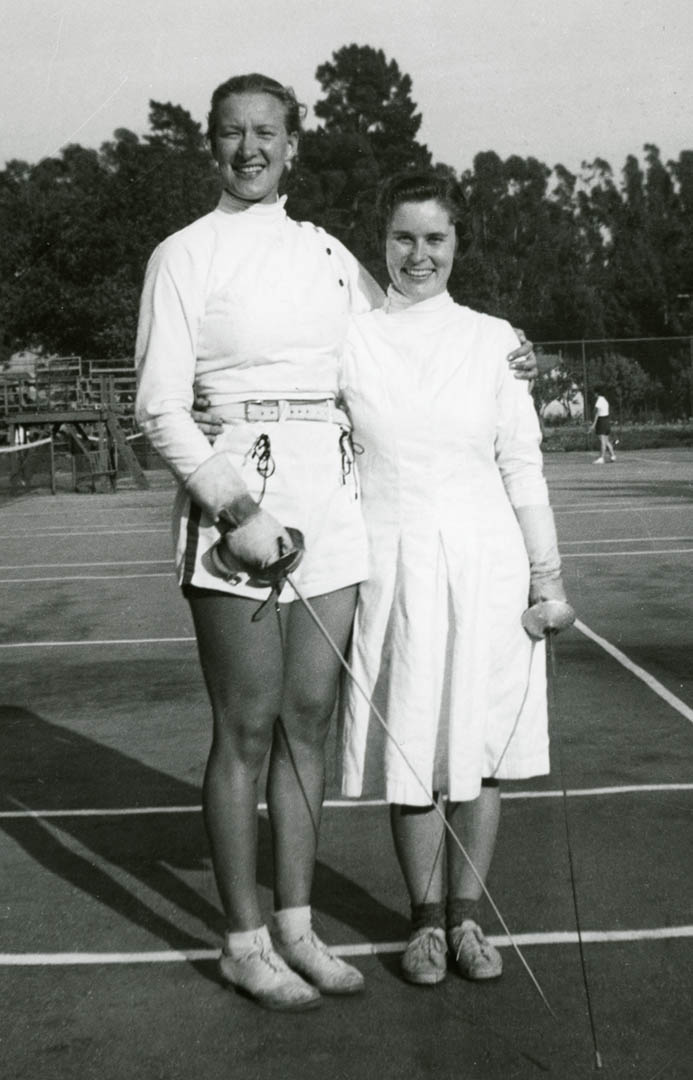
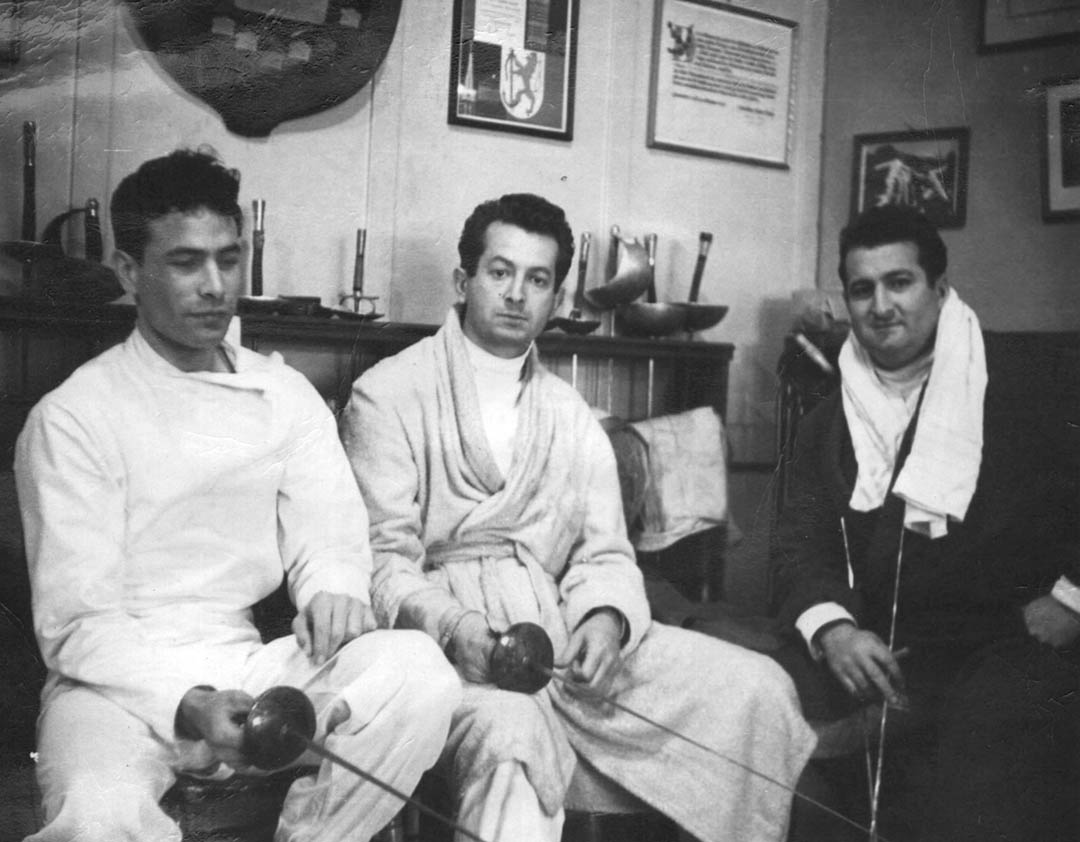

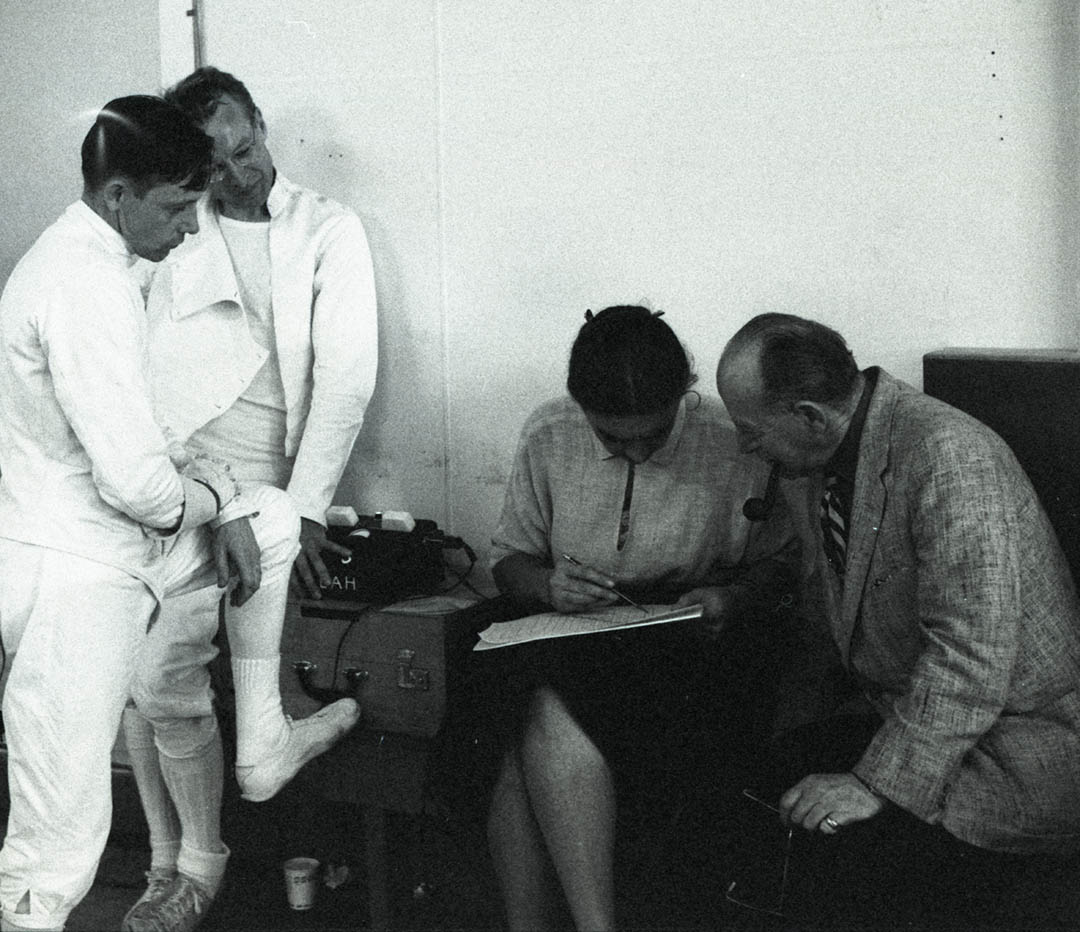

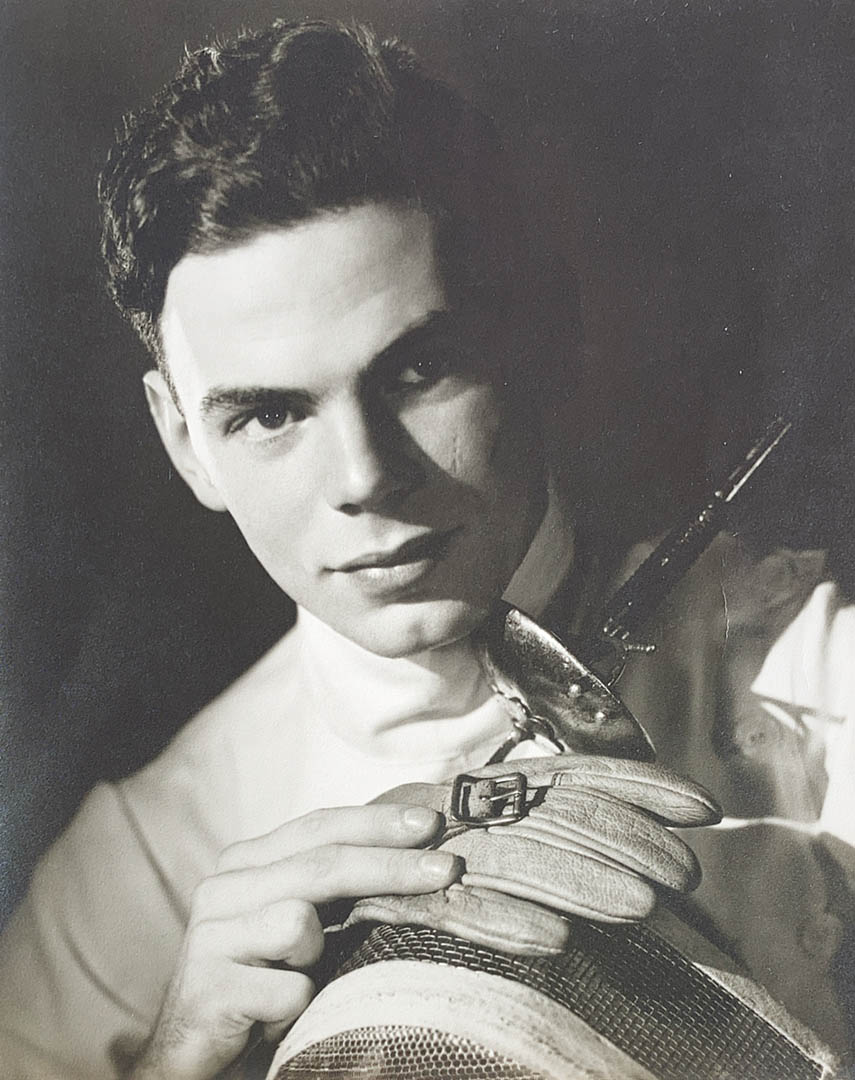

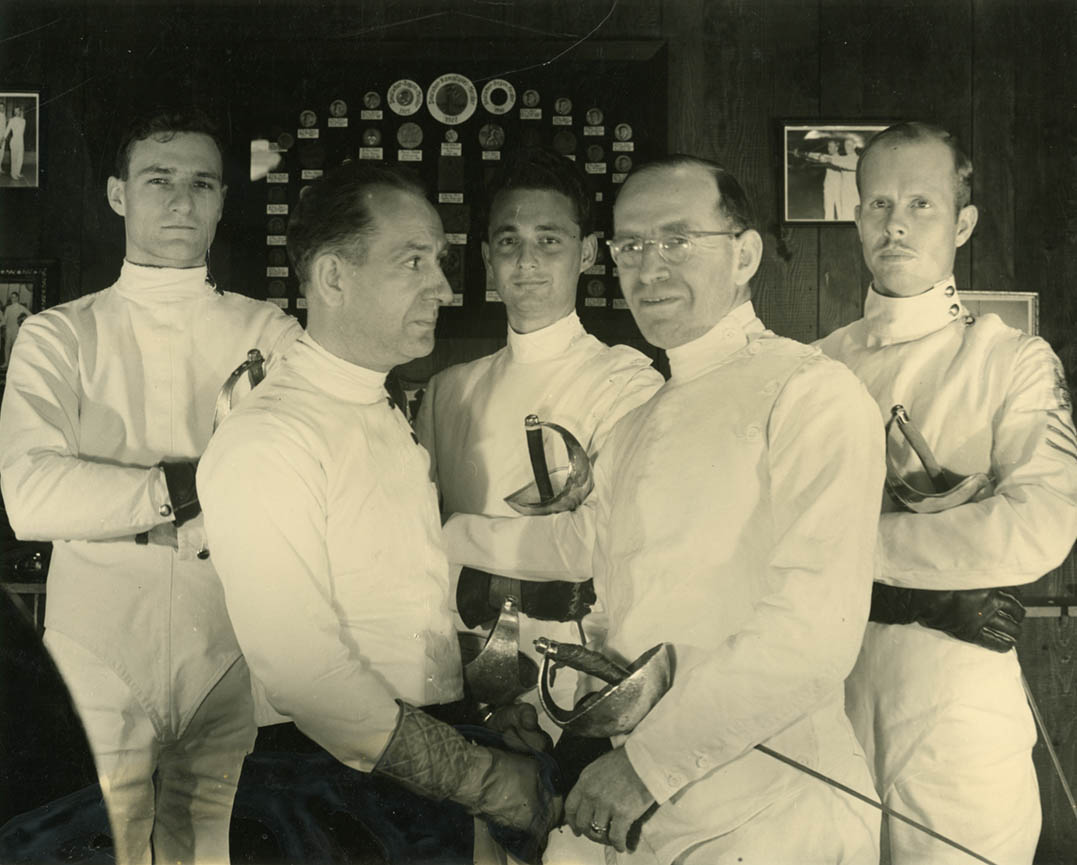
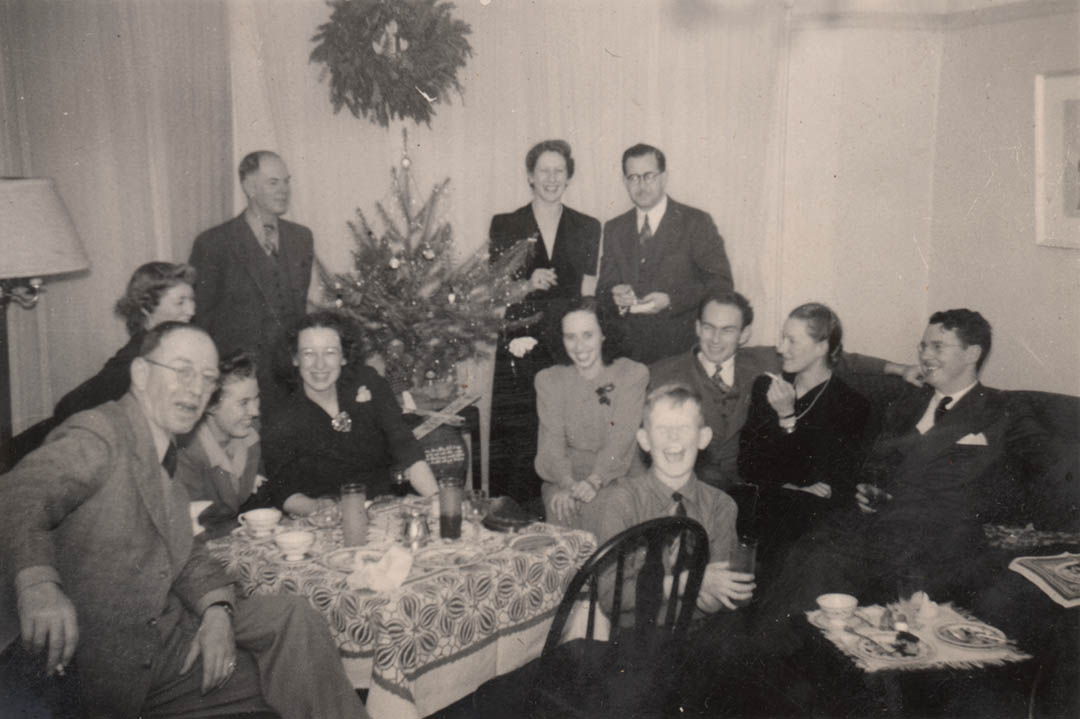
Honestly, best article yet Doug. The SF Bay Area and the Fencing world owes you a huge debt. And it can probably be settled with a bottle!